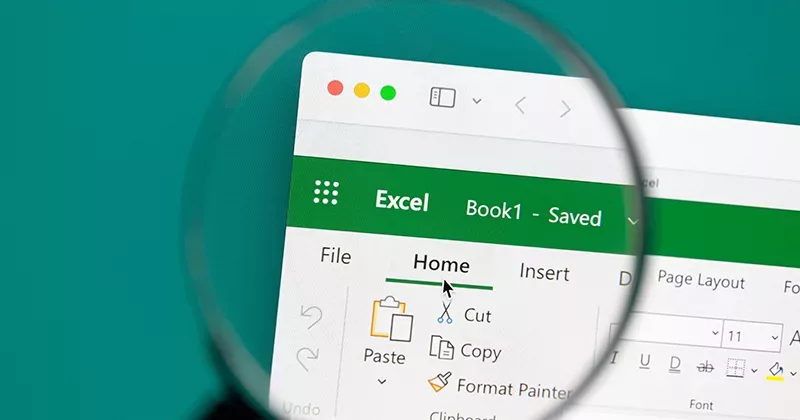11 mins read
13 Steps To Implementing Construction Software

The construction industry is steadily digitizing and adopting new technologies. Implementing innovative construction management software solutions offers massive advantages. Yet, it can be seen as a challenge to many businesses. Because of the perceived complexity and cost of new software systems, the shift from traditional methods to digital solutions is often met with resistance. Employees and managers alike may be hesitant to adopt new tools, fearing the learning curve and the potential disruption to established workflows. Furthermore, investing in software and integrating it with existing systems can seem daunting, particularly for small companies with limited resources.
However, there are far-reaching benefits to be gained from implementing construction software, and the benefits far outweigh these challenges. Construction software significantly enhances efficiency and productivity, including automating and streamlining processes such as project scheduling, construction cost estimation, and resource allocation, among many other things. With real-time data and analytics providing valuable insights, managers can make better decisions and proactively manage any project risks. This software also ensures improved communication and collaboration in construction projects through centralized platforms, as all stakeholders are on the same page and misunderstandings and errors are reduced.
Construction Software Implementation Challenges
The road to an integrated construction software system is full of thorns. Success in construction software implementation depends on understanding these challenges and will allow one to reap the benefits of a digital transformation in construction.
- Cultural shift. Introducing new software becomes a cultural shift in a company. The employees must understand the value of such a new system. The proper training programs, along with support for the employees, must be in place to ensure that the employees are aware of the new tools and processes. This is where strong leadership comes into play in driving the change. The leaders need to lead by example to the rest of the organization.
- Integration with existing systems. There are a lot of software and tools being used in construction projects daily. The issues include complex considerations and are very time-consuming in ensuring that the new software seamlessly fits in with the other systems. This includes migrating data to the latest software from the old ones, and continuous updates where the integration must be maintained over time.
- Software complexity. Construction software solutions generally have numerous features and functionalities. While this has advantages, it is also a limitation since it makes the software complex and cumbersome for persons without a technical background to use. For instance, the user interface should be friendly to users so that the learning curve is short and their buy-in is quicker.
- Real-time collaboration. The prime benefit of construction software is to enable real-time collaboration among the team members; however, it often tends to be cumbersome because of the dispersed nature of team members, mixed technical aptitudes, and varied work processes.
Tips For Effectively Implementing Construction Software
As we mentioned above, adopting new construction management software requires a change in existing systems. If the roll-out of the new software isn’t planned carefully, it could create a lot of confusion and stress within the organization.
Follow these steps to help make implementing construction software as smooth and rewarding as possible.

1. Goal setting and Strategy
Every serious business owner or operator must have specific goals and milestones in mind to set out and reach commercial targets. The strategic elements of how to get there and the tactical actions that break this down further should be aligned to reaching those goals and will be a pivotal part of the processes and procedures that are put in place for the departments and teams to be able to deliver.
Construction software like RIB CanBuild is specifically designed to provide the functions and capabilities to manage, track, and report on these processes, so make sure your goals and strategies are clearly defined at the outset before embarking on your construction software implementation.
2. Create a Needs Document
One of the best practices in implementing software is to create a detailed needs document right at the start of the process. Do this before you introduce the software.
Start by making a list of every person within your organization who will use the software. This should include the regular daily users, as well as anyone requiring data from the use of the software. The list also needs to cover all the construction management software requirements.
You can use the needs document as an important reference for which features you should implement from the start and what areas of work need the most focus. A clear needs document can help to guide a smoother implementation of the new software. It helps to assign responsibilities and identify pain points.
3. Define A Budget
Defining a budget is a critical step in ensuring the financial viability and sustainability of the project. This usually involves an evaluation of all possible costs that may arise, including those for acquiring the software or its subscription fee, hardware upgrades, staff training, and recurring maintenance and support fees.
Equally important are the indirect costs, including possible downtime during the transition period and resource allocation for troubleshooting and integration, among others. A realistic budget will help stakeholders make necessary feature priorities, avoid hidden expenses, and ensure a smooth implementation that could optimize construction software benefits at minimal cost.
Effective communication with stakeholders is essential to keep the budget realistic and reflect the actual needs and goals of a project: finance, IT, and construction teams.
4. Maintain Realistic Expectations
Yes, implementing the software will boost your company’s productivity. But you do need to be aware that the software probably won’t lead to overnight success. Thinking that it will, may place an unnecessary amount of pressure on employees. It could also lead to disappointments or misconceptions about the software.
Make sure that any construction management software is implemented with realistic expectations for long-term success. It’s best to monitor the productivity increase in phases, instead of at once straight from implementation.
5. Pull Together an Implementation Team
When implementing innovative technology, you should carefully assign the right team to move the software implementation forward. These need to be individuals with commercial experience to understand how each segment will be impacted, and they will need to allocate an appropriate amount of time to the project.
However, dropping all your employees into the deep end at once can cause stress and impact productivity. Instead, focus on the most important uses of the new software, and start by having the most relevant people use it at first.
Having input from key figures throughout the process – from initial contract tendering, estimation, construction procurement, project management, sales, finance, and every other department – will ease the transition and ensure potential issues are addressed at the early stages, rather than putting out fires after the event.
6. Avoid Micromanagement
When putting new software in place, managers need to avoid micromanaging the process. The software probably won’t help with minute-to-minute tasks straight away. Instead, managers should view the software introduction as a more large-scale and long-term process.
7. Keep Control of Your Scope
A new software solution for managing a construction project, like RIB 4.0, can have loads of enticing and exciting features. However, this doesn’t mean you need to implement all of them straight away. Going too fast too soon could turn the implementation into a big mess.
Instead, keeping focused on the original scope is important. Start by prioritizing the most important features your business needs. Once they are comfortably in place, then you can start to increase the scope of your software use. By covering your core needs first, you will be able to set up a stronger basis for the new software.
Staying organized is essential. And avoiding scope creep will have a major impact on the overall implementation of your software.
8. Executive Buy in and Support
Introducing construction software is not an IT project alone and will have wide reaching implications and benefits across the entire organization. Although it is technology based, the software solution is going to be a user-friendly integrated system that will pull all departments in the same direction as one team. This is a business transformation and an enhancement that should be embraced as a positive game changer by everyone from the top down.
Executive teams should lead by example and actively encourage all team members to understand the benefits and improvements that will be gained from implementing the systems and ensure everyone is completely on board. Positive engagement at all levels will significantly ease the transition. Removing some of the fear of change and replacing it with excitement would be ideal to make sure everyone is talking about business transformation rather than change.
9. Phased Roll Out
Planning the roll out with a definite timeline and clear roles and responsibilities will be important in achieving the implementation on time. Planning how it will be embedded in sequence will ensure that the adoption is done at a manageable pace and with minimal disruption. Create a ‘road map’ to monitor and report progress along the chain to all stakeholders to keep everyone on track and fully engaged.
10. Change Management
Depending on the size of your organization, you may or may not have a change management construction team in place. Adopting construction software is going to introduce a great deal of change (thankfully positive ones) that will impact efficiency, profitability, workflows, and transparency. These changes are also going to make project management and completion significantly easier and, in most cases, eminently quicker (the administrative side and removal of process delays combined with maximized effective deployment of resources will deliver these enhancements; we are not trying to suggest that the software will speed up the actual physical construction elements).
There are likely to be continual improvements, additions, and enhancements to follow the initial implementation. Consider appointing an internal team to manage these going forward, as well as to manage the implementation itself. The experienced and reputable construction software providers in the region will be able to assist you in this, so make sure to include these discussions in the software selection process. The most experienced providers will have successfully embedded their software into companies just like yours and will have a wealth of knowledge and advice to share with you.
11. Create a Positive Adoption Process
Effective software implementation should be proactive and positive. As a business owner or team leader, you may understand the benefits of the new platform. However, this doesn’t mean that your team necessarily shares this enthusiasm. They’re comfortable with their old processes, so they may see construction software implementation as a challenge.
This means that you need to encourage adoption over sole implementation. Focus on highlighting the benefits of the software and try to make the new software a positive experience.
12. Define KPI’s To Measure Success
Effectively implementing construction software means taking a proactive and positive approach. With Key Performance Indicators (KPIs), companies will be able to measure performance against their objectives and make data-driven decisions to optimize processes.
Some of the KPIs contractors measure when using construction software include the rate at which they get paid (as opposed to when using traditional methods), how much time they are saving on billing, and how much the margin for error is reduced. Factors such as general time savings and increased collaboration should also be taken into account. A professional construction analytics solution can assist in tracking KPIs in real-time in an interactive and visually appealing format.
13. Focus on Continuous Improvement
Even with a leading software solution, you might not get everything right straight from the start. Any new system requires some getting used to, meaning you can expect some speed bumps along the way.
Instead of focusing on achieving perfect use of the new tool as soon as it is implemented, rather focus on a continuous flow of improvement. Your construction management software should be a long-term solution. So, focus on improving your software use a little more every day.
Who Is Involved in Implementing Construction Software?
Implementing software is very much a combined effort among several stakeholders in a construction project. Important players in such an implementation are the project managers, who provide coordination of the overall process and ensure that the use of software complies with the project’s goals.
IT specialists play a vital role in integrating the software into the existing systems and in solving any technical issues.
The foreman or site supervisors make sure that practical insights are being given to meet on-site needs, enhancing the workflow.
Additionally, financial managers work to ensure the software has budgeting and cost-tracking features.
It is very much necessary to work with software vendors for training and support so all team members can work flawlessly with the new tools.
Conclusion
If you follow the processes above as you embrace your construction management solution, it will make implementation more seamless and effective.
With the right construction software provider working with you, your business will be able to successfully report the return on investment in the swiftest time frame and smoothest transition. Choose a software partner like RIB Software, that helps you to make construction software implementation easy and is committed to your success. At RIB, you get the best support right from the start, where we will make sure you implement the software optimally and ensure the software adoption process goes smoothly.
If you want to benefit from state-of-the-art software solutions developed by professionals with decades of experience in the building industry, get a demo for RIB’s product toolkit today!
Most Recent
11 mins read
10 mins read
10 mins read
29 mins read
Blog Categories

Ebook











